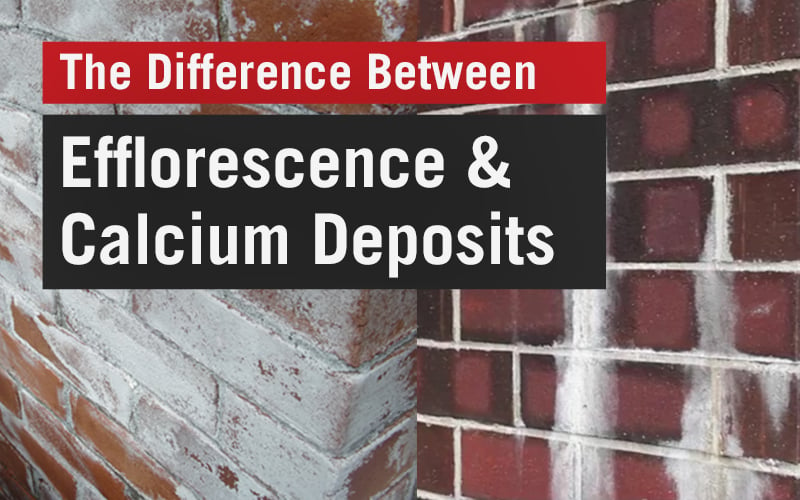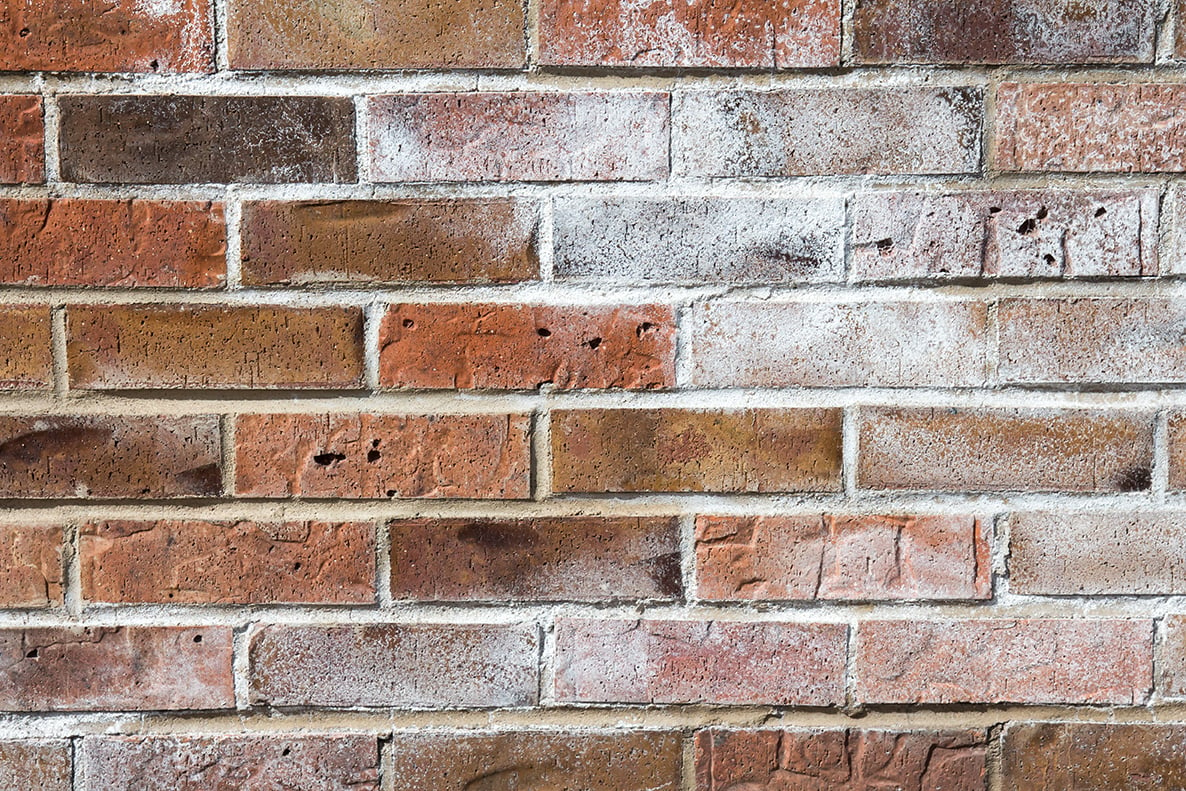The Difference Between Efflorescence and Calcium Deposits

Defining Efflorescence and Calcium Deposits
First, let’s define efflorescence and calcium deposits. Efflorescence is a deposit of salt that collects on the outside of a material’s surface. Calcium deposits (also referred to as lime buildup) accumulate right below a material’s surface. Both conditions occur when evaporating water pushes minerals in the material towards the surface and can be indicators of water damage.
Physical Characteristics
Efflorescence, a porous substance, looks white and chalky. Since it rests on the surface of a material, efflorescence will darken when splashed with water. Calcium deposits are denser than efflorescence and will usually appear as white streaks running down a material’s surface. Because the calcium forms right below a material’s surface, water will not affect its appearance.
How to Clean
Both efflorescence and calcium deposits can be cleaned using one of two methods. First, for very mild cases of efflorescence, try a 50/50 mix of white vinegar and water. Using a scrub brush, spot treat and scrub affected areas with the vinegar mix. The acidity in the vinegar helps remove the efflorescence and calcium deposits by breaking down mineral crystals. After cleaning the surface, let dry for 48-72 hours (moisture content below 25%).
The second (and easier!) method of cleaning is using RainguardPro Restore-N-Prep. Simply spray the solution onto the surface and then wait 5-8 minutes (no scrubbing required!). Then rinse off with a power washer or a hose, depending on the substrate.
Often efflorescence and calcium deposits can be removed without compromising the structure of the material. However, if there is excessive mineral loss the material can become brittle so make sure to replace the surface if this occurs.
How to Prevent
There are two ways to help ensure that the efflorescence and calcium deposits do not come back. If the side of the surface that is receiving the moisture can’t be sealed, seal the surface with one coat of RainguardPro Efflorescence Blocker. It works on above and below-grade projects to block minerals and alkali from coming up to the surface. Efflorescence Blocker is great for surfaces where waterproofing membranes have failed or have one side touching soil. The second way to prevent efflorescence is to apply two coats of a penetrating Silane / Siloxane water repellent such as RainguardPro’s Micro-Seal®. This is the best solution for surfaces where ALL sides of the surface can be sealed.
Have questions? Feel free to reach out to us here.
Request a sample for your project here.
Follow us on Social Media on Facebook, Instagram, and YouTube.


